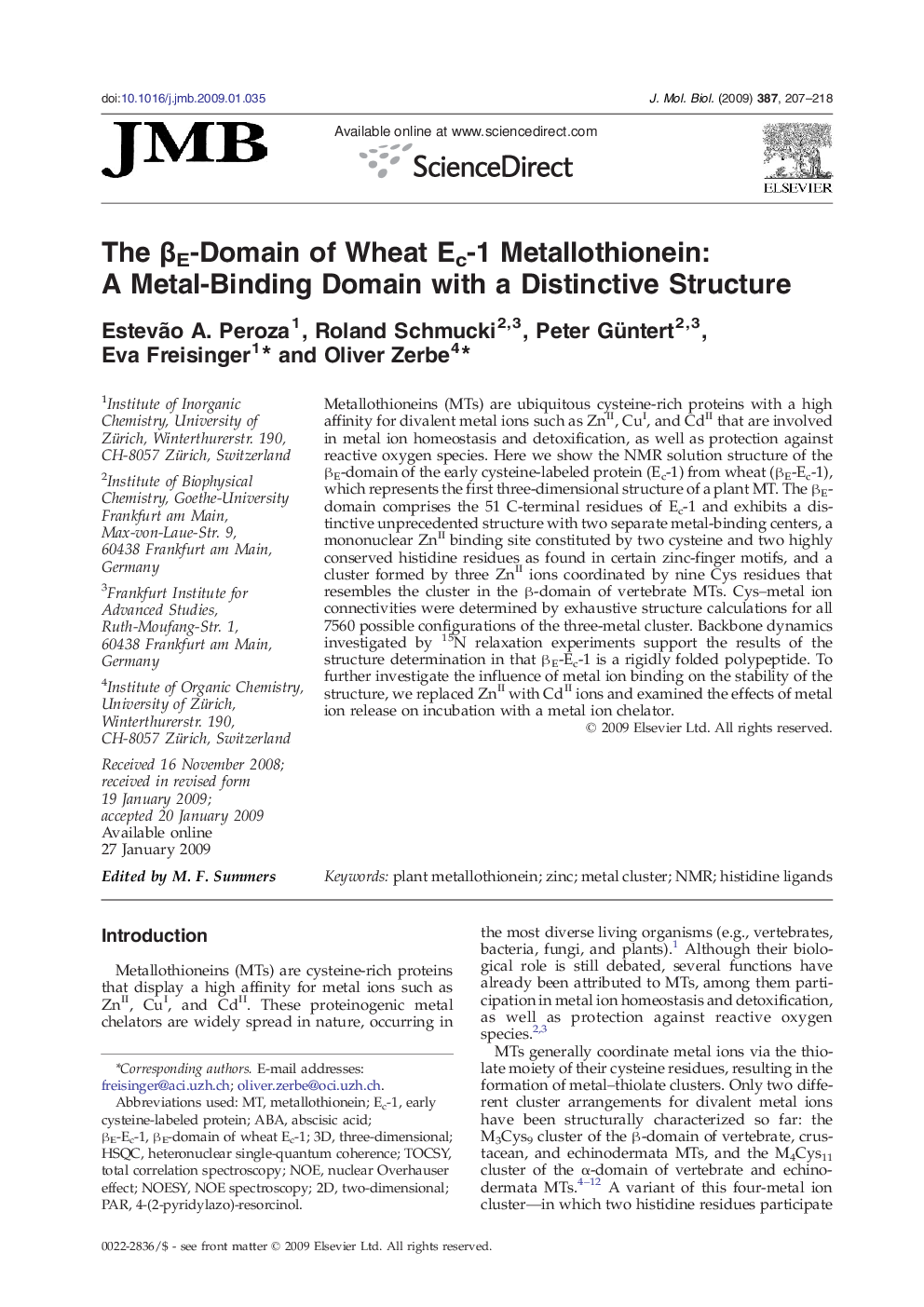| Article ID | Journal | Published Year | Pages | File Type |
|---|---|---|---|---|
| 2186933 | Journal of Molecular Biology | 2009 | 12 Pages |
Metallothioneins (MTs) are ubiquitous cysteine-rich proteins with a high affinity for divalent metal ions such as ZnII, CuI, and CdII that are involved in metal ion homeostasis and detoxification, as well as protection against reactive oxygen species. Here we show the NMR solution structure of the βE-domain of the early cysteine-labeled protein (Ec-1) from wheat (βE-Ec-1), which represents the first three-dimensional structure of a plant MT. The βE-domain comprises the 51 C-terminal residues of Ec-1 and exhibits a distinctive unprecedented structure with two separate metal-binding centers, a mononuclear ZnII binding site constituted by two cysteine and two highly conserved histidine residues as found in certain zinc-finger motifs, and a cluster formed by three ZnII ions coordinated by nine Cys residues that resembles the cluster in the β-domain of vertebrate MTs. Cys–metal ion connectivities were determined by exhaustive structure calculations for all 7560 possible configurations of the three-metal cluster. Backbone dynamics investigated by 15N relaxation experiments support the results of the structure determination in that βE-Ec-1 is a rigidly folded polypeptide. To further investigate the influence of metal ion binding on the stability of the structure, we replaced ZnII with CdII ions and examined the effects of metal ion release on incubation with a metal ion chelator.
